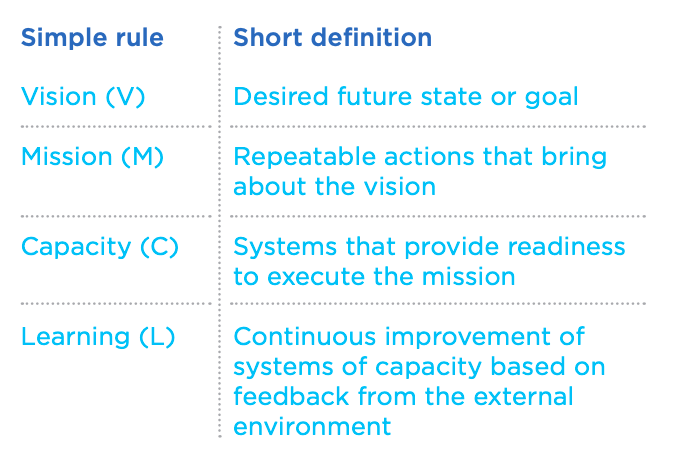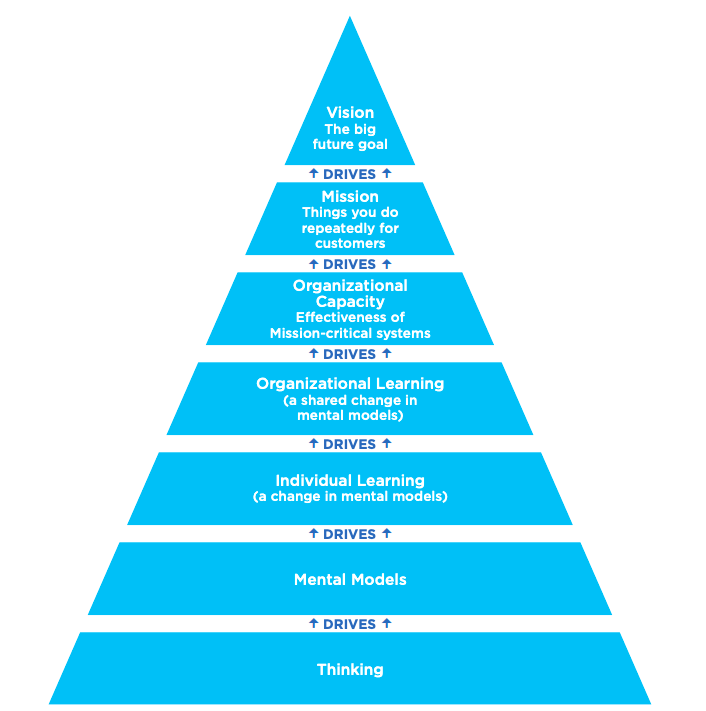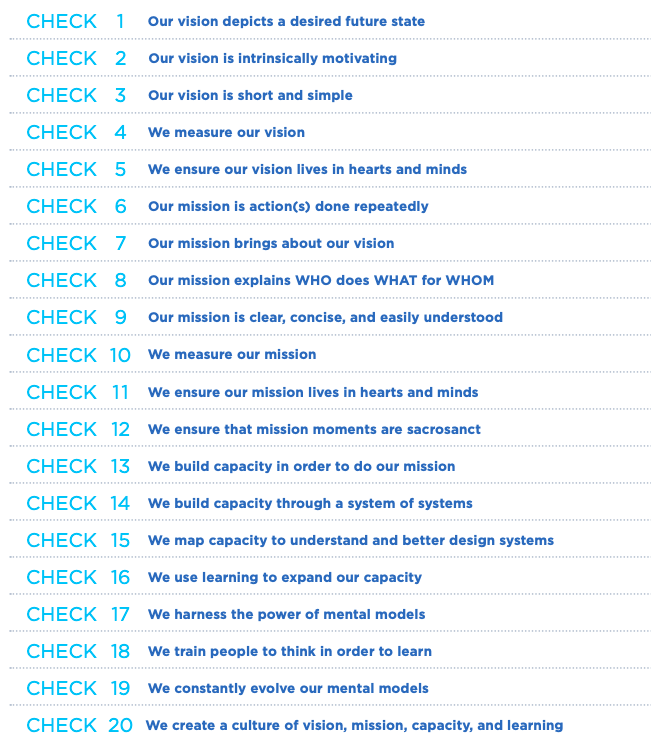The Four Simple Rules of Organizations
 Derek & Laura Cabrera
·
2 minute read
Derek & Laura Cabrera
·
2 minute read
This post is an excerpt from Chapter 1 of Flock Not Clock.
So what are the simple rules of an organization? How do we leverage them to maximize organizational learning, adaptation, and success? These are precisely the questions we have been focused on answering, in our academic research and in our work with corporations. We strive to discover the tools and technology they need to help them adapt and thrive. We have defined four simple, deeply interconnected rules that apply in all types of organizations.
- Vision (V): The future you see. This is NOT your grandma’s vision statement. In Chapter 2, you’ll learn that defining your vision—your desired future state—is precise, demanding, and ultimately rewarding work. We will show you how to align all aspects of your organization to bring about this future, so your vision needs to be motivating, simple, and measurable.
- Mission (M): The actions you take, repeatedly, to bring about your vision. In Chapter 3, we’ll make sure you are not putting together a hackneyed hodgepodge of biz speak. Your mission statements will be clear, concise, and measurable.
- Capacity (C): The systems that provide readiness to execute mission. We will examine how to measure the organizational capacity required to execute your vision day in and day out.
- Learning (L): Continuous modification of mental models based on feedback from the external environment.
Your vision, mission, capacity, and learning (VMCL) should form the tenets of your culture—they are the key mental models to inculcate. Just as all organizations possess culture, they also possess these natural VMCL functions. Every organization has some ultimate purpose, a desired future state or goal (vision), whether or not it is articulated clearly or widely shared. Similarly, every organization possesses a mission—it takes repeated actions to achieve the vision. All organizations have capacity (adequate or not, ultimately aligned with the vision via the repeated steps of the mission or not). Finally, all organizations (that are complex adaptive systems) learn. That learning may or may not further the vision and increase the organization’s fitness.
 Table 1.4: VMCL: the simple rules for the CAS that is your organization.
Table 1.4: VMCL: the simple rules for the CAS that is your organization.
 Figure 1.12: Thinking drives Individual and Organizational Learning, which drives Capacity, which drives Mission, which brings about Vision.
Figure 1.12: Thinking drives Individual and Organizational Learning, which drives Capacity, which drives Mission, which brings about Vision.
VMCL is a systems leadership model that helps us to better design, guide, manage, and change our organizations. Throughout this book, we will guide you through VMCL, using the following 20 point check list. By the time you are done, you will have the blueprint to build the culture you need to attain your ultimate goal: to have your entire organization, at every level, working toward realizing your company’s vision—your desired future state.

See Dr. Cabrera do a tactile demonstration of the four functions of organizations for his graduate students at Cornell University.
.png?width=150&height=150&name=CRL%20GOAT%20Logo%20(4).png)



